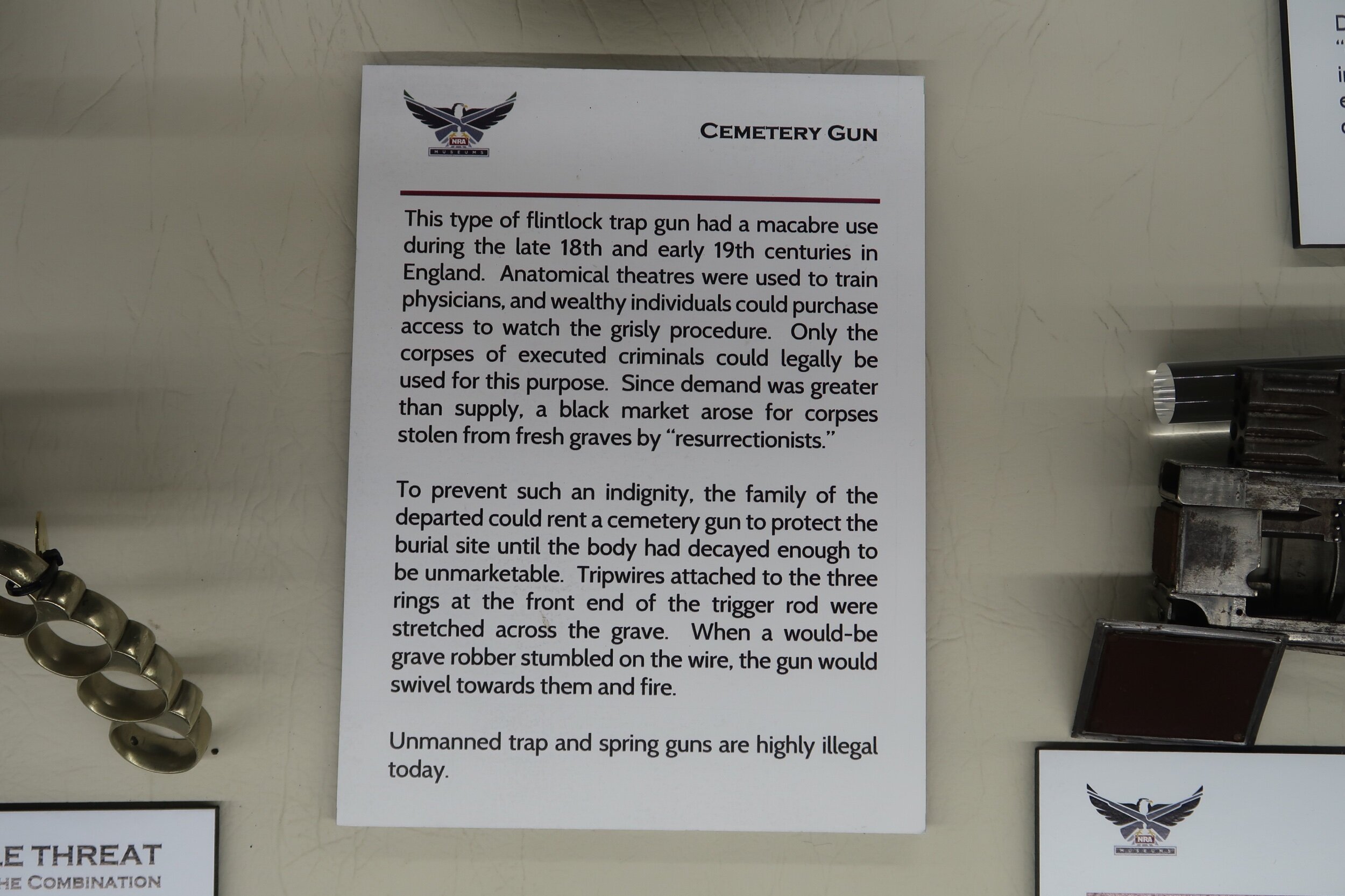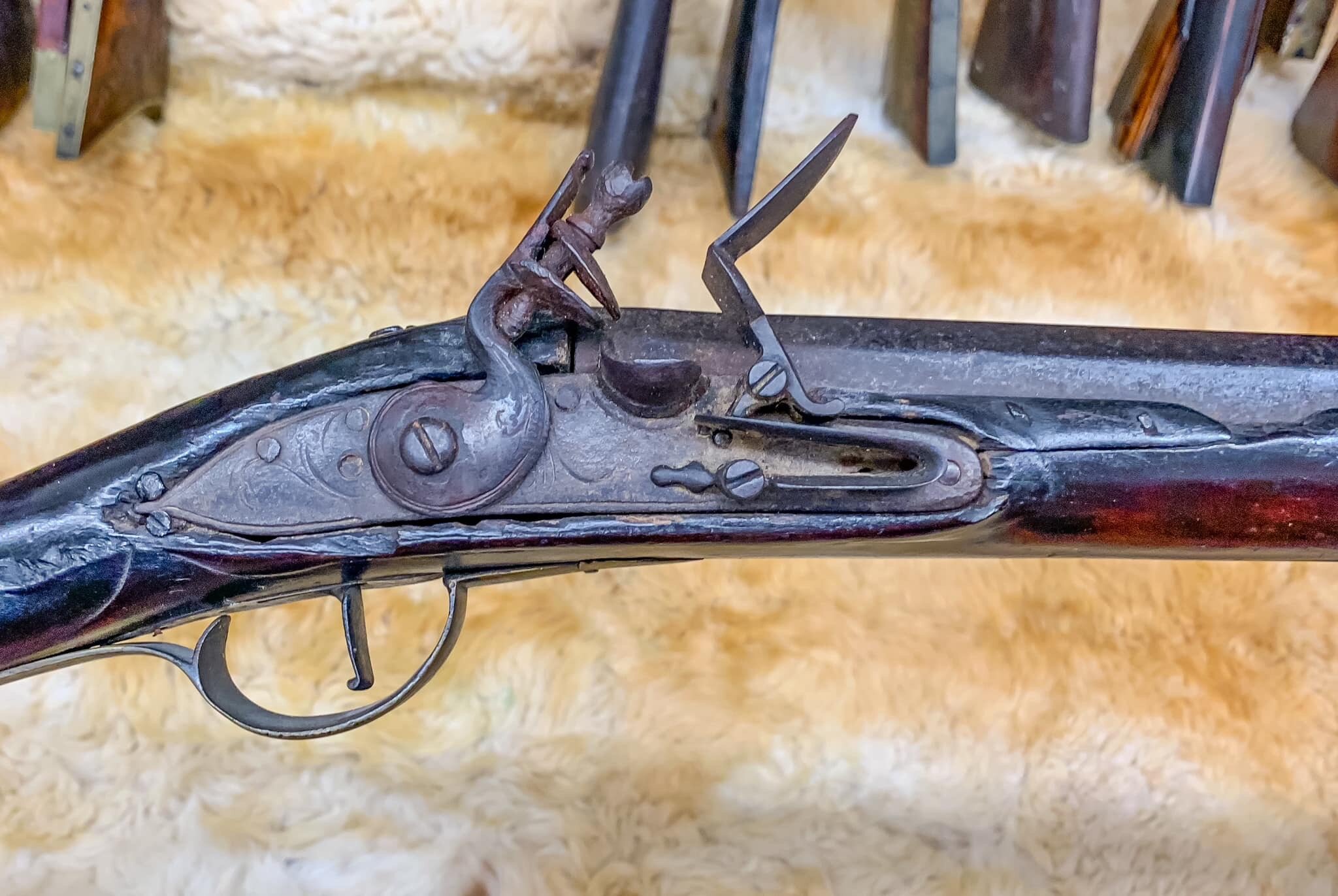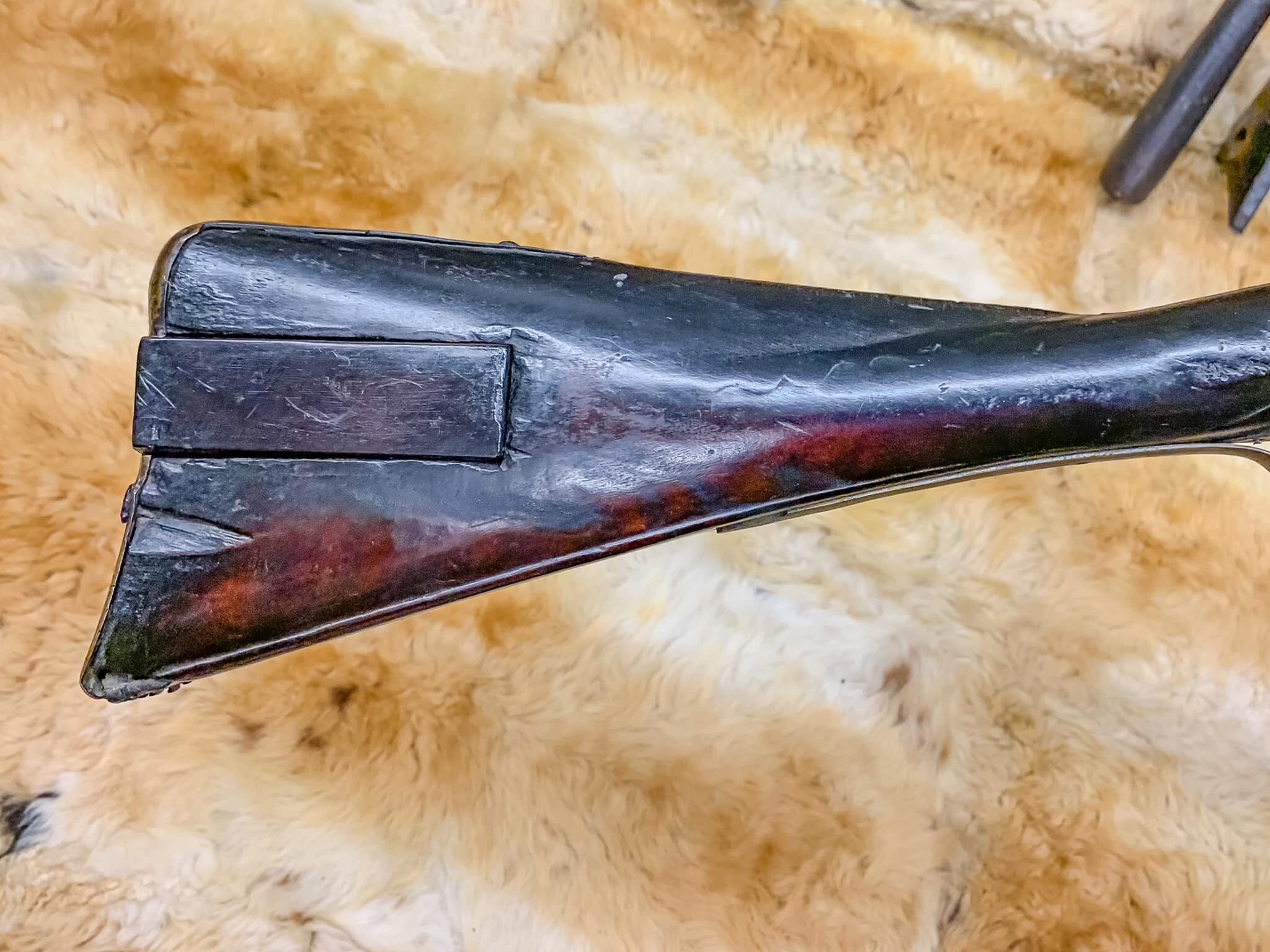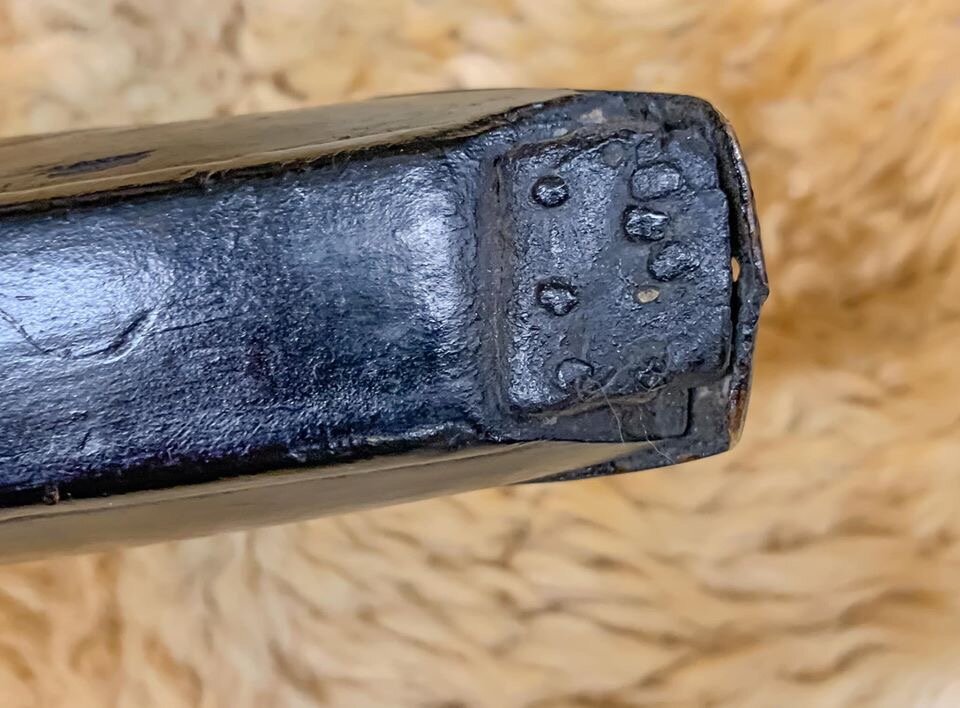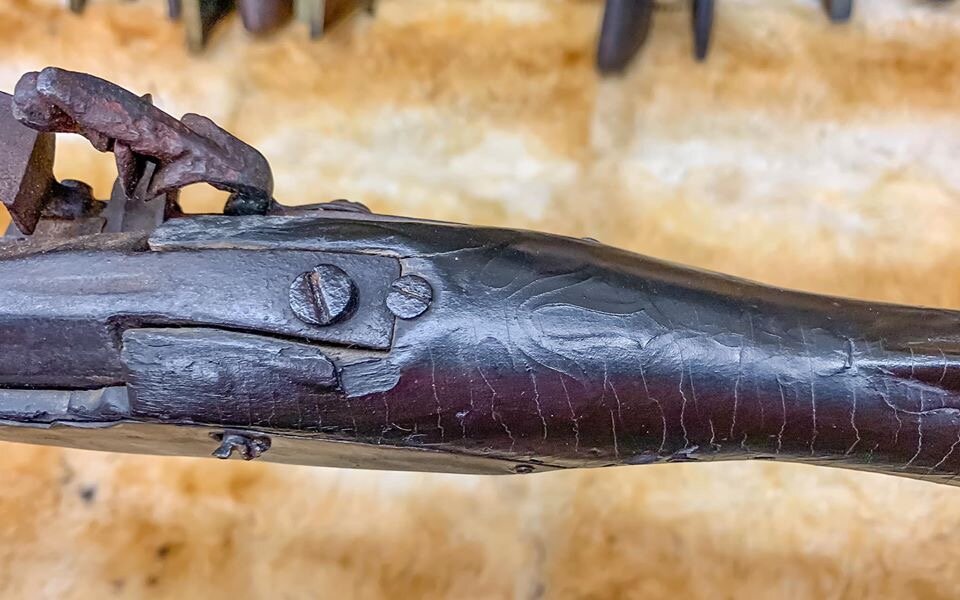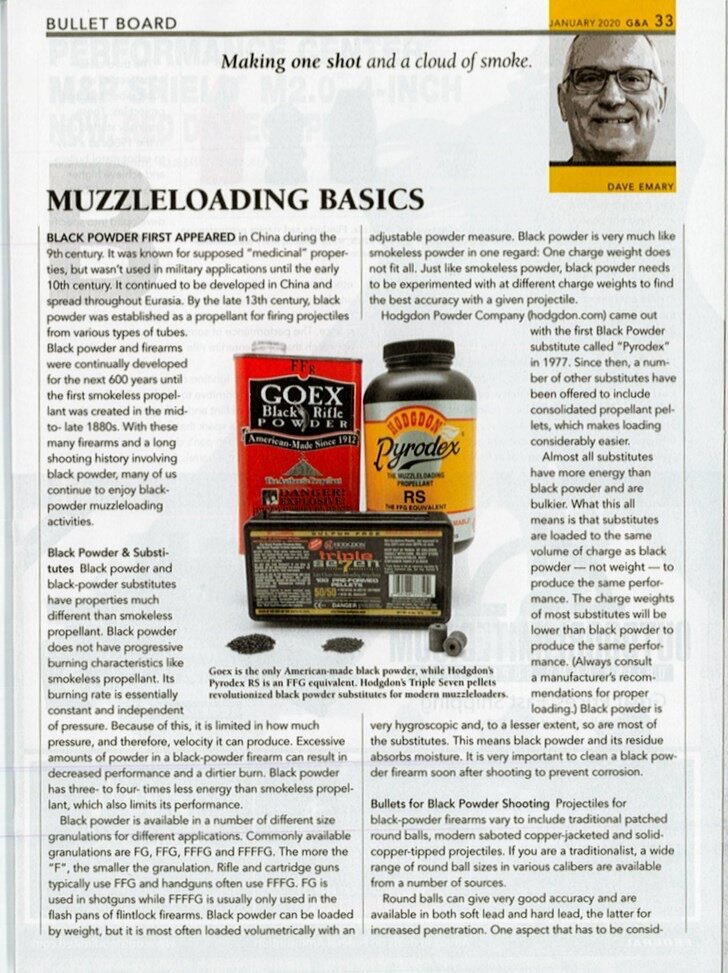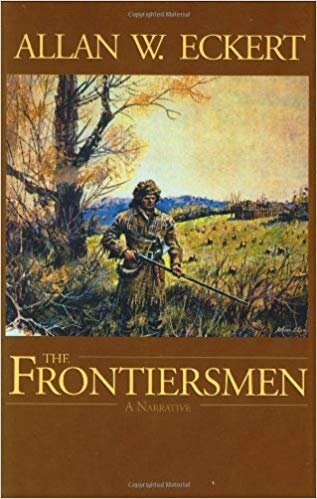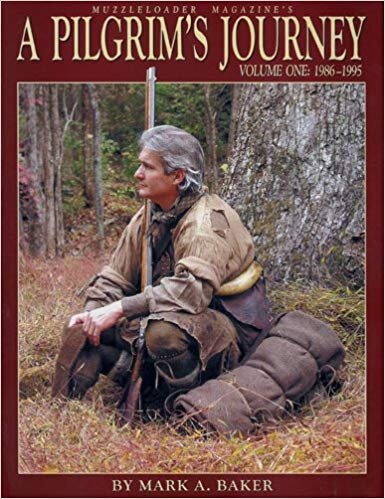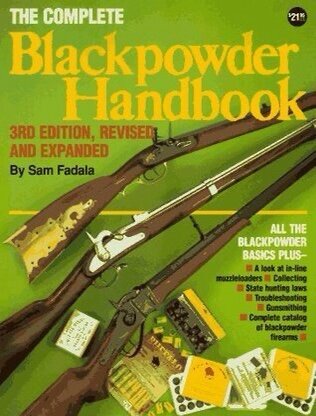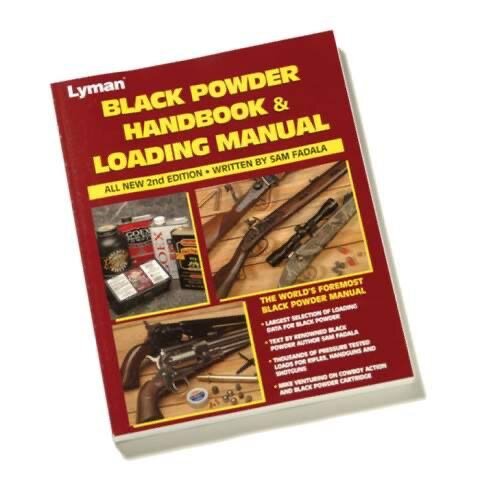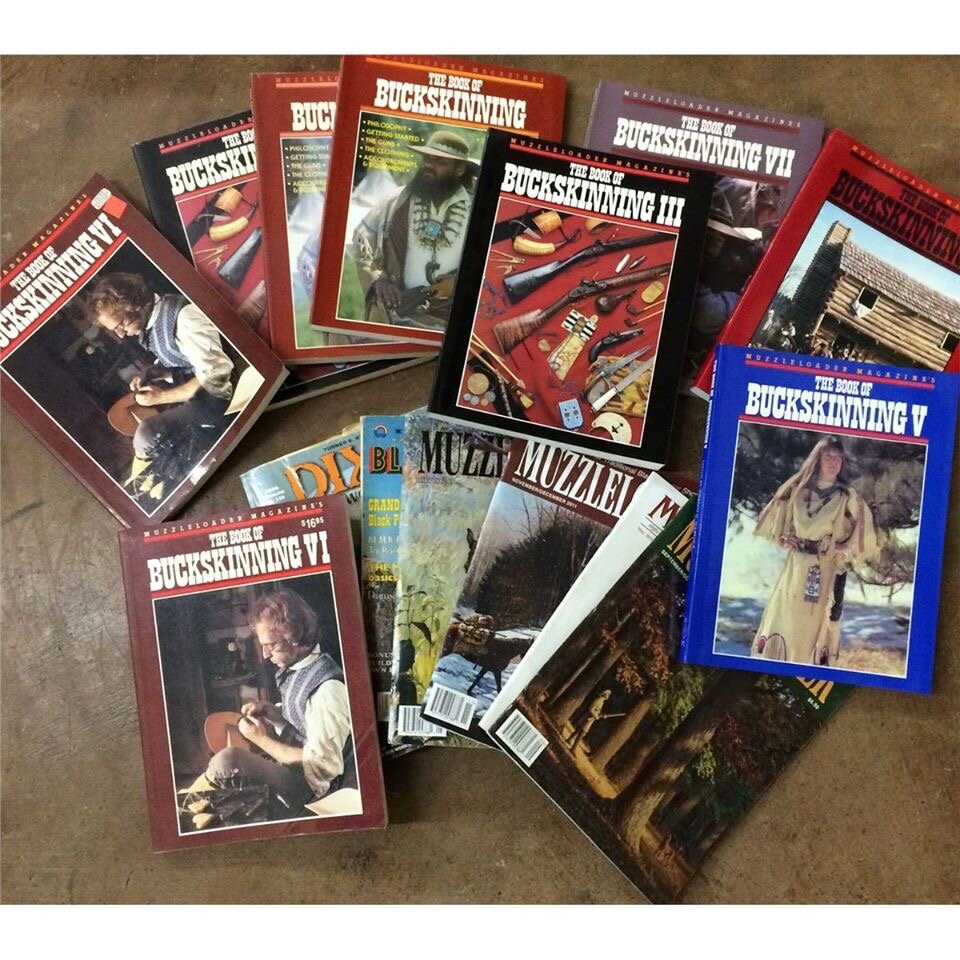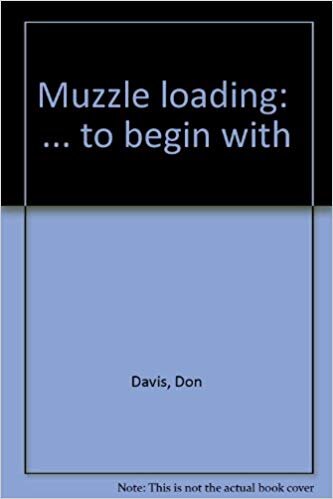Bill Raby continues his 4 Bore Flintlock Rifle build with part 26 in his video series. In this video, he’s beginning to inlet the lock, which he claims isn’t as hard as people think! So, if you are eager to learn about muzzleloader building, you’ve got to check out this video!
The Twentieth Century Story of Two Extraordinary Frontier Guns, Part 1 Wallance Gusler
The '·pursuit of happiness" presents an endless array of opportunities. Over sixty years ago the pursuit of the 18th century American frontier became the major direction of my life. The two flintlock firearms that are the focus of this series (figs. 1 & 2) are extremely important as landmark survivals of the mid-18th-century frontier. They represent the conflict between Colonialism, becoming Americans, and the collision with American natives.
Check this out! | New in box TC Hawken Seneca Renegade | Unfired
Patrick Mitchell shared this New In Box, unfired TC .54 Hawken Seneca Renegade in the "Black Powder Firearms Enthusiasts" Facebook Group and we just had to share it.
Announcing the NMLRA Monthly Downloadable Target Program!
Hunting season may be over for most of us, but that's no reason to put your #muzzleloader away for the year! We’re excited to be launching our new downloadable target program. In the first week of each month, we’ll share a new themed target that’s free to download just to give you an excuse to get your smokepole out.
Join us for some muzzleloader shooting this month with this cupid inspired target!
A Riffle Gun and What Belongs To Her | Muzzle Blasts Archives
Load Development for your Flintlock Squirrel Rifle | Black Powder TV
It’s Monday, which means Black Powder TV released a new video yesterday! This week, follow along as Bob begins developing a blackpowder load for his .36 caliber flintlock squirrel rifle. This rifle is built from a Kibler “Southern Mountain Rifle Kit”, one of the more popular DIY muzzleloader kits we see!
If you are interested in building your own kit muzzleloader, learning how to develop loads for your muzzleloader, or just want to enjoy some blackpowder fun vicariously, be sure to watch!
We are excited to be working with content creators like Black Powder TV and the Black Powder Maniac to promote not only the NMLRA, but our love for muzzleloading and living history so it may last for generations to come.
How to stop grave robbers in the 18th century
Happy #flintlockfriday! Here’s a look at a flintlock I’ve never seen before. This is an English “Cemetary gun”, used to keep grave robbers away from your newly deceased relatives during the height of medical “study” in Victorian England.
Mounted on a swivel, this beast of a muzzleloader would be tied to trip wires that, when tripped, swung the muzzle in the direction of the thief and sent a lovely lead gift their way.

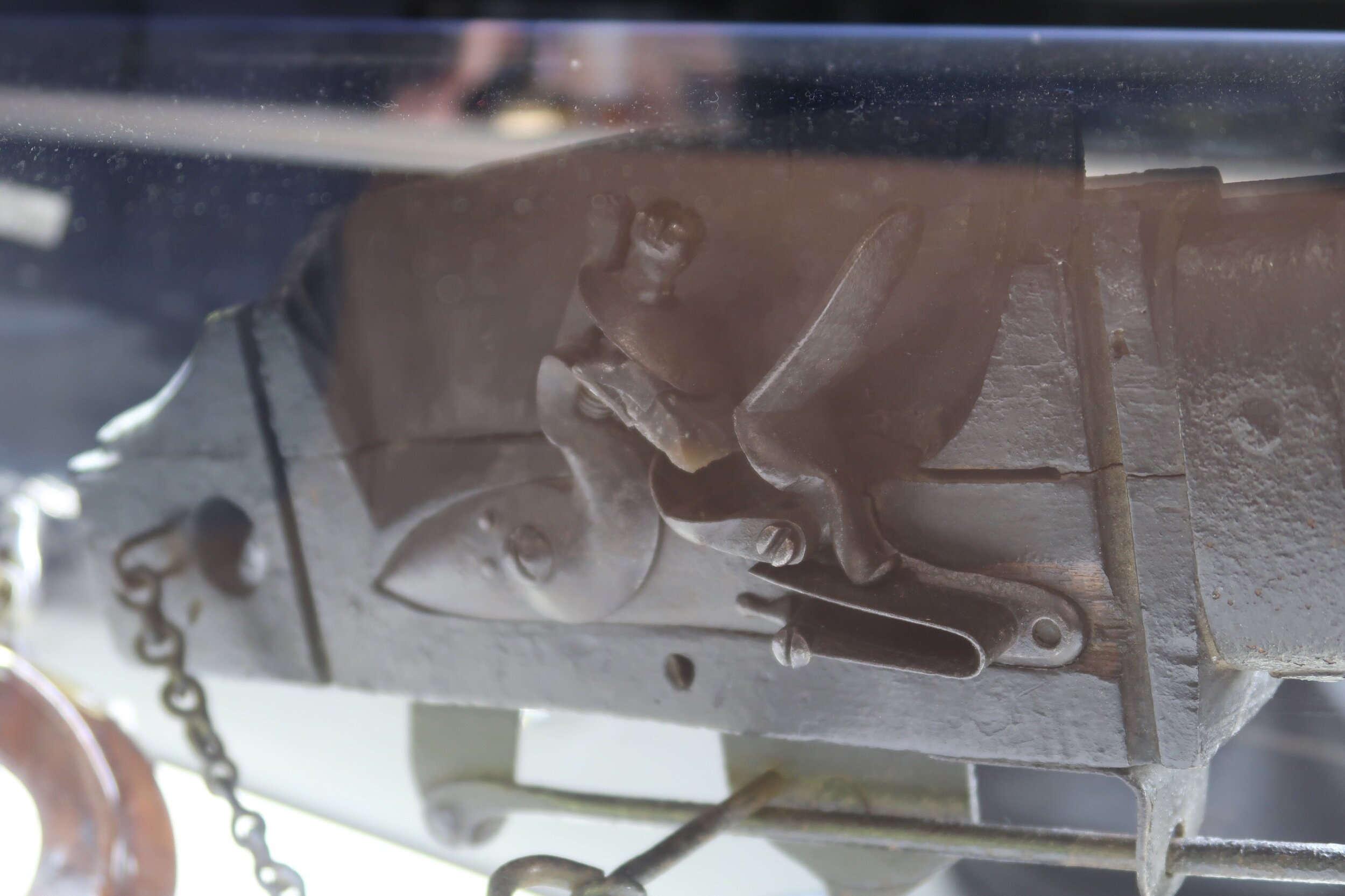
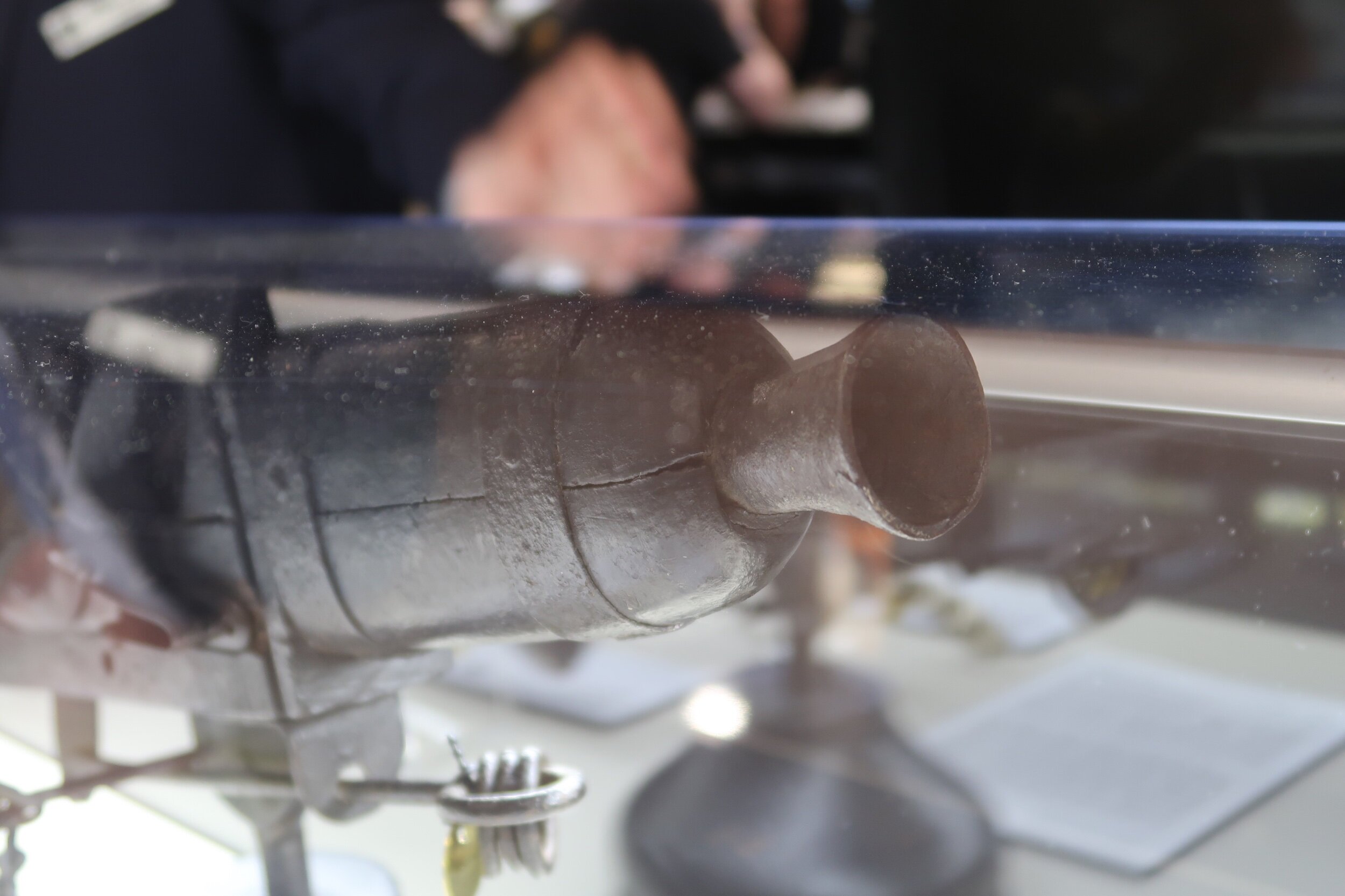
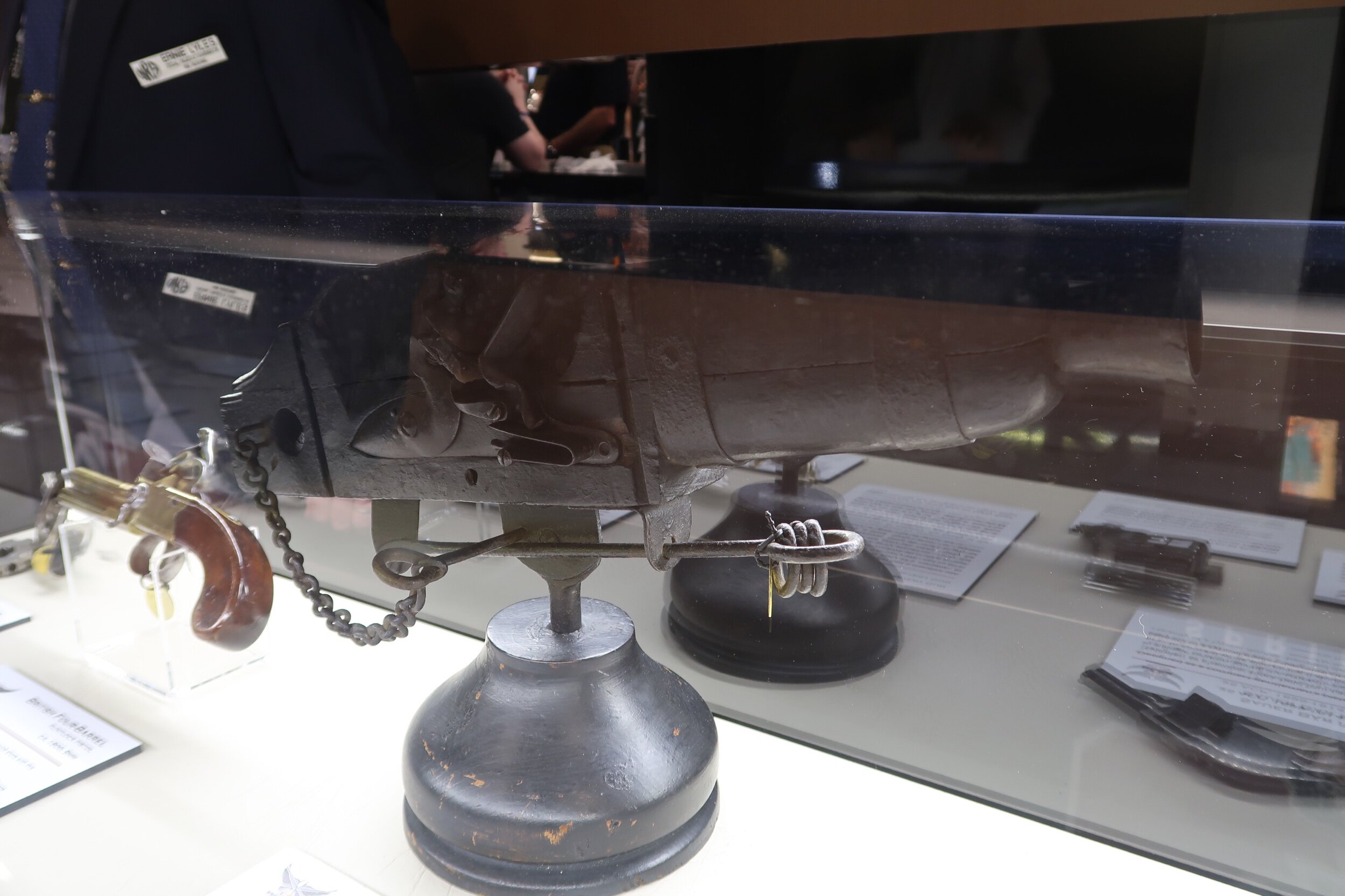
An original Augusta County Virginia | Original Flintlock from 1750’s
Longrifle made in Augusta County, Virginia Circa 1750s. This is a quintessential Virginia frontier workhorse rifle, which likely saw more than a century of service. At .62 caliber, it has an extremely large bore for a rifle. It is a rare example of a French and Indian War era rifle, in a conflict and time mostly comprised of smoothbore guns.
This is a very early relief carved longrifle attributed to Augusta County, Virginia School of longrifle gunsmiths. Possibly made by John Hannah, Augusta County Gunsmith or from the Augusta County Gun Factory in Staunton, VA. It is very possible that it was made by John Hannah. John was among the earliest gunsmiths known to have worked in Augusta County, Virginia. Prior to 1739, the Hannah family settled in Augusta County on land southwest of Staunton, Virginia on Colliers Creek (Colliers Creek lies southwest of Lexington, VA in present day Rockbridge County).
They settled on land acquired from Benjamin Borden who had been the recipient of the Borden Land Grant in 1738. In 1754, John Hannah agreed to teach his indentured servant, John Mitchell, the art of a blacksmith and gunsmith. In 1768, John built a mill on Colliers Creek.Based on his inventory of tools recorded after his death in 1782, he was a blacksmith, white-smith, silversmith, and gunsmith. Early southern wooden patchbox longrifles attributed to a Virginia maker are rare.
This longrifle was owned for many years by George Shumway. There is wonderful early carving on the check piece and the longrifle retains a period patchbox lid which may be the original patch box cover. The check side of this longrifle was subjected to heat from a fire in George Shumway’s home. The damage to the wood was minimal and the wood was sucessfully stabilized after the fire.
The lock was converted to flint by Alan Guthchess (Curator at Fort Pitt). Alan commented that this was his favorite “frontier longrifle”. This longrifle was on display at Fort Pitt in their renowned French and Indian War display, “Captured by Indians” in 2015 – 2016, along with the original spike tomahawk I posted yesterday.
Photos from the 2020 New Year's Day Shoot
What’s on your workbench, Malachiah Pifer?
Good morning from the workbench of Malachiah Pifer, student of gunsmith Mike Miller. We’ve been watching Malachiah’s progress for a while now. It’s great to see a young man pursuing this craft with such enthusiasm and skill.
Thank you for sharing Malachiah, and thank you Mike Miller for passing on your craft.
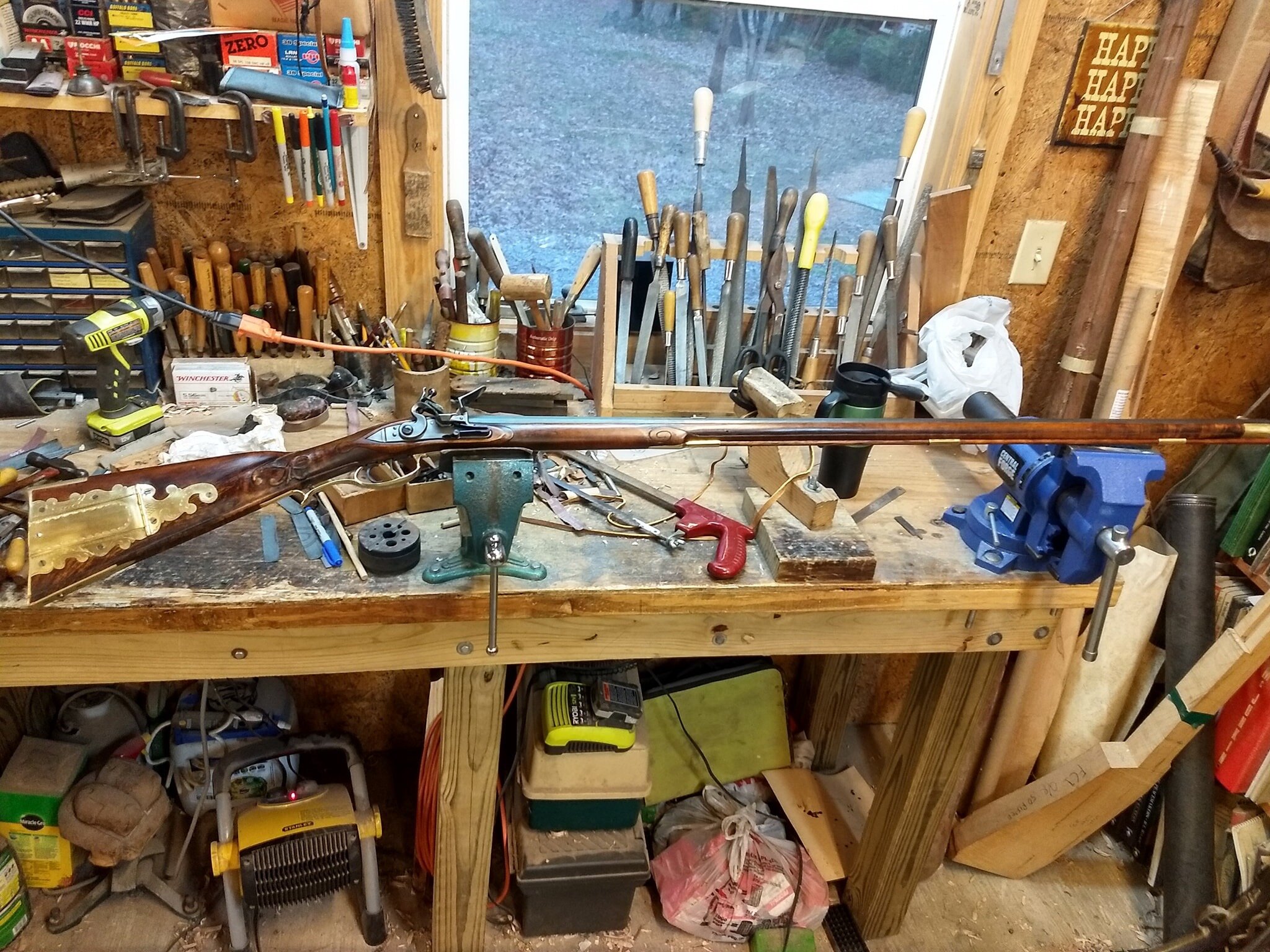
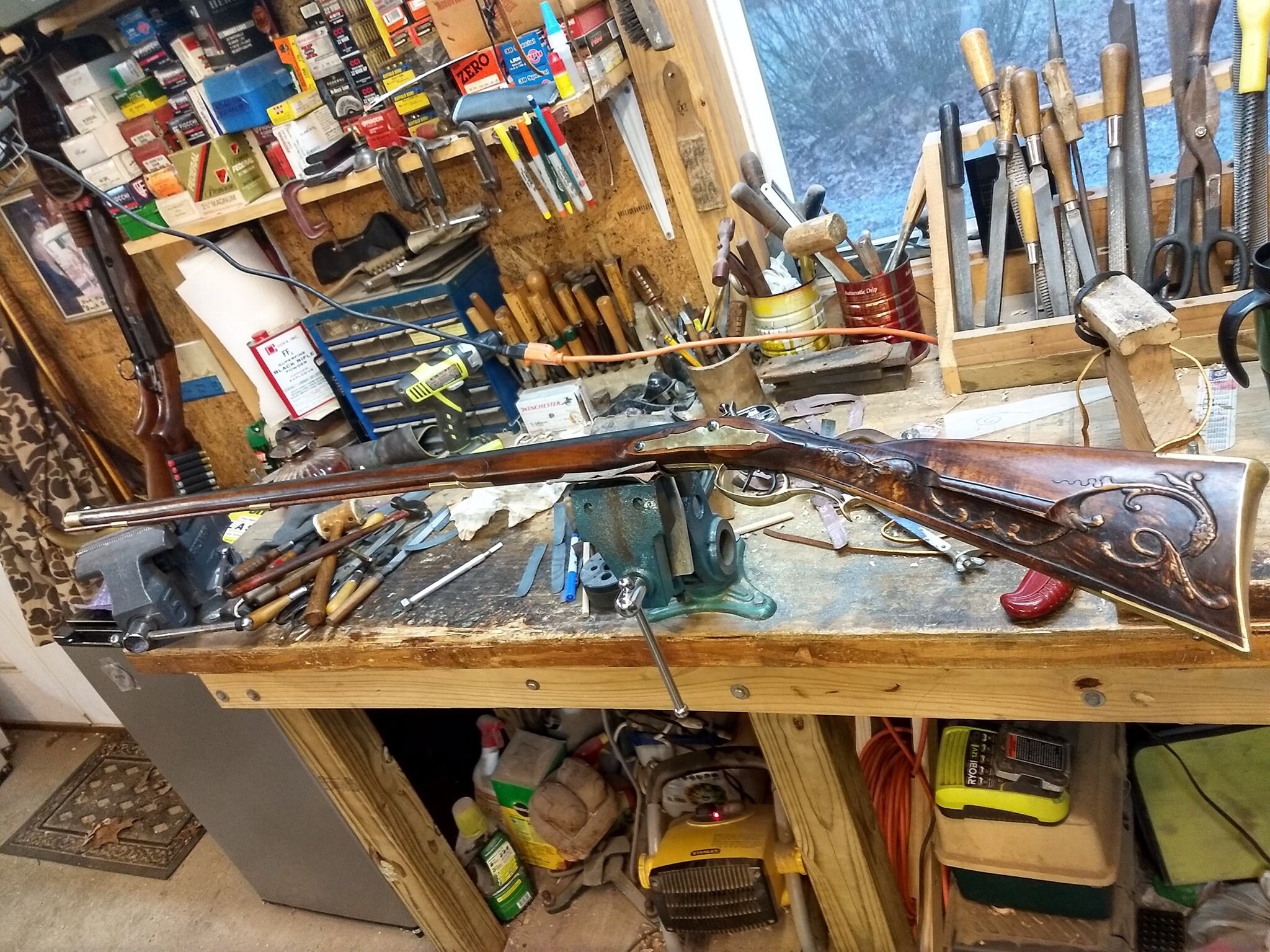
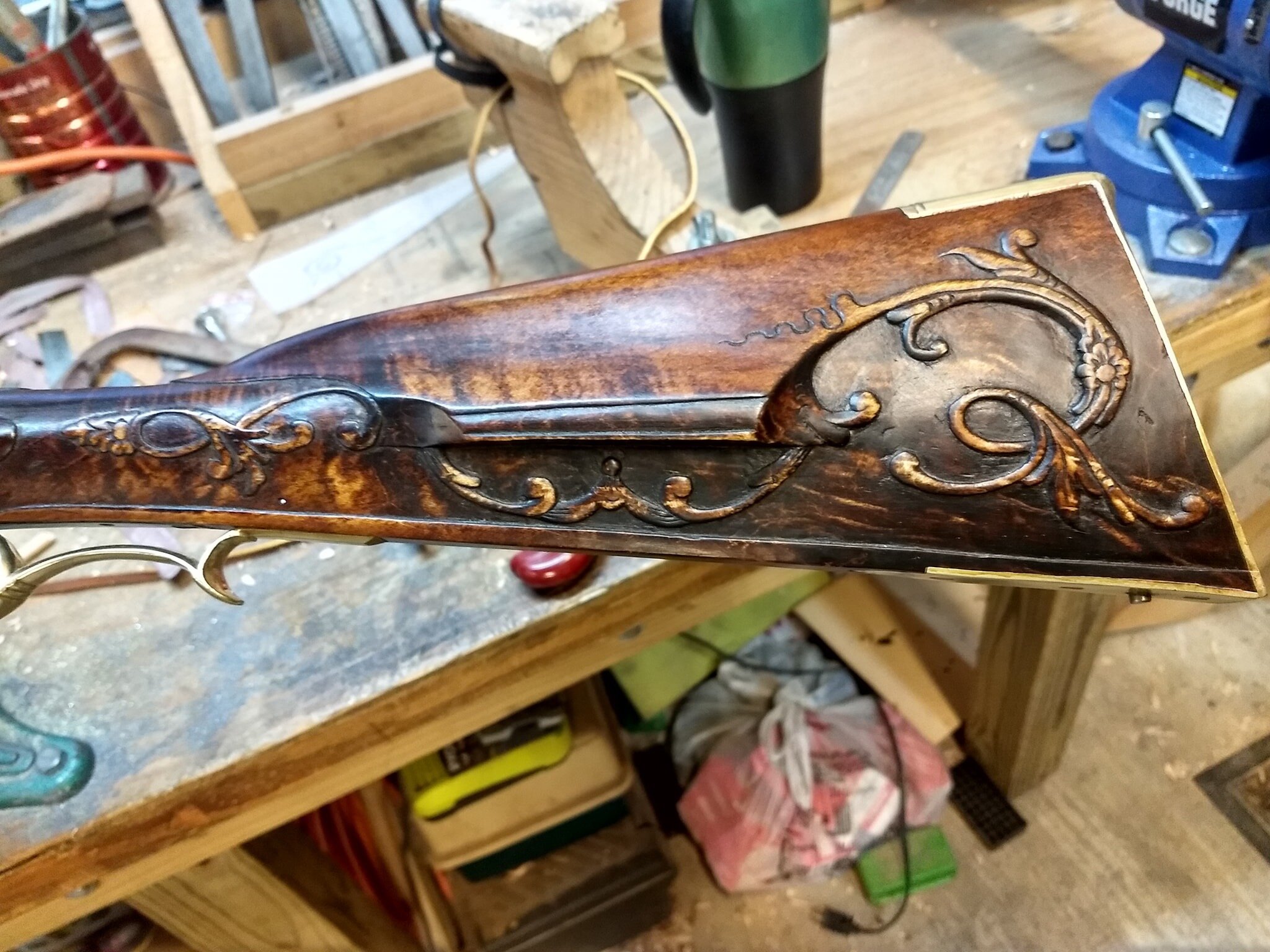
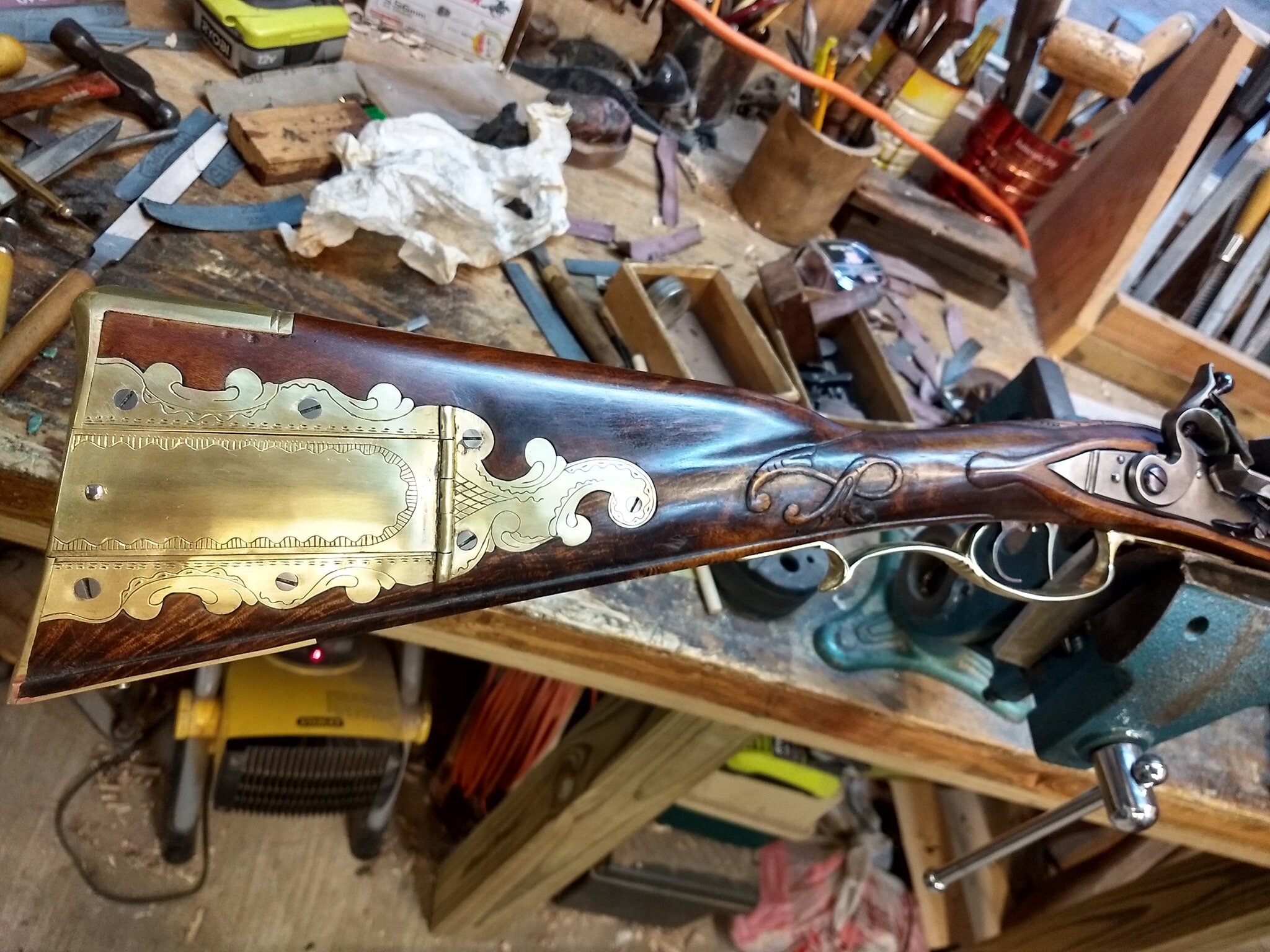
Thank you Jeff Luke for running the “Traditional American Craftsman” Facebook group for craftsmen of all skill levels and experience to share work and discuss traditional craft.
Muzzleloading Basics, an excerpt from Guns & Ammo Magazine
Our friends at Hodgdon Powder shared this great excerpt on muzzleloading basics from Author Dave Emary and Guns & Ammo Magazine.
“For all you muzzleloader hunters headed out this season, be sure to check out January’s issue of Guns & Ammo Magazine for a nice write-up on our GOEX black powders and Pyrodex and TripleSeven substitutes from our good friend Dave Emary.”
Starting with blackpowder’s origin in China in the 9th century and continuing through modern black powder substitutes, author Dave Emary brings a comprehensive look at our beloved powder’s history.
The mystery of a naked flintlock from 1815
Boone’s Trace Biathlon 2020
Get started with Living history and Muzzleloaders with these books
We’re always on the hunt for good resources to share with anyone looking to learn more about muzzleloading and black powder. These books might look a bit dated, but they are old favorites from our members.
Click the cover to be taken to a page where you can view or purchase each book.
Whether you are wondering how to get started in reenacting, or a veteran of many encampments, these books have something for you! Learn how to select the time period that's right for you, join a reenactment unit, and get the clothing and equipment needed. These books offer a variety of knowledge, whether you are wanting to focus on muzzleloading or living history.
If you’d like to join in on the conversation, head on over to our NMLRA Facebook Group! The group is open to anyone who is interested in Muzzleloaders and living history as long as they follow the rules.
Find out more about the NMLRA
Editor’s Message | Muzzle Blasts Vol. 81, #5
The following article appeared first in the January 2020 Issue of “Muzzle Blasts Magazine”, the official magazine from the National Muzzle Loading Rifle Association.
Happy New Year! It is always exciting to greet January 1st as it holds all of our dreams and expectations for the coming months. New muzzle loaders to sight in, new loads to explore, and new hopes for Longhunter adventures are just but a few of our wide-eyed hopes. And here at the NMLRA we look forward to the many opportunities to serve our membership through black powder shoots, rendezvous, educational programs, seminars, shooting and sighting in at our world class ranges, and of course our two gatherings during the national shoots. Moreover, our Muzzle Blasts staff can’t wait to bring you the best stories and columns full of muzzleloading equipment; muzzleloading rifle/pistol/shotgun building tips; history; treks; hunts; primitive camping/cooking; trips beyond Friendship and insight into the best information from our muzzle loading culture.
To improve our arrival of monthly MB magazines, we are asking our magazine writers to get their articles/photos to us a week ahead of the previous deadlines. In other words, submit your material by the 25th of two months prior to publication. This allows the USPS time to get the magazines to the members by the 1st week of the month. If you would like a new schedule for submissions, email the office and we will reply with a schedule.
Our old friend (and past editor) Eric Bye brings sage advice to this New Year Muzzle Blasts with his article “Charge!” He writes, “I just bought a dandy antique gun that needs some TLC. At home the first thing I did was remove the barrel from the stock, insert a wooden ramrod as far as it would go, mark it with a pencil at the muzzle, and lay the rod along the outside the barrel to see if it reached all the way to the breech plug face. It stopped almost an inch short, so I re-measured to confirm. Sure enough: there was something inside that barrel.” Obviously, checking the inside of a muzzleloading barrel is not as easy as with a modern gun. But there’s nothing difficult or technical about it, and this article will reinforce the wisdom of making sure there is no charge lurking inside the breech.
Clary Estes brings a heartfelt story to our souls with a story about Rifle Number 42. Growing up with the idea that a gun was equal to art work seemed odd to my peers, but in my house it was always understood. “It’s country boy art is all I can tell you,” my father, Wayne Estes, a talented gun maker in his own right, once told me, but these were no ordinary guns. These were guns that took 60–160 hours to make. They were guns that were meticulously handcrafted by artisans who had spent decades honing their craft. These guns were heavy and loud, shooting off a KA-PANG of smoke with the pull of each trigger, before needing to be cleaned and carefully reloaded with hand molded round lead bullets for their next shot. These were guns that tied men to their American ancestry. These were long rifle muzzleloaders, the guns of colonial America.
There are so many great articles in this issue that it will be hard to decide which to start with first. But if you are me, I always read from the back to the front and am never disappointed. In “Beyond Friendship,” Jim takes us to Union City, Tennessee to visit with the iconic business that gave many of us a nudge down the muzzleloading trail. Dixie Gun Works was officially started in 1954 by Turner Kirkland. He started it as a hobby to make extra money while working as a traveling jewelry salesman after World War II. He would travel from town to town visiting stores to sell jewelry but would ask about any antique guns and gun parts. He bought sold and traded antique muzzle loading gun parts and his car trunk until it became full. He placed a small ad in Muzzle Blasts magazine in October of 1948. He placed a three inch ad at the cost of $3.50; he would make $16 from the orders and his wage as a salesman at the time was $20.00 a week. From there Turner Kirkland’s business would grow and continues to grow until his death on July 26, 1997. Dixie Gun Works has an over 600 page catalog which is loaded with a lot of information. The catalog isn’t just about what is for sale, but it also has a large section with reference tables covering service loads of muzzle loading rifles to muzzle loading cannons; weights and measure tables, including drams to grains to ounces. I always make sure I have a Dixie catalog at my desk.
And if your imagination hasn’t run wild yet, you need to pay attention to Bob Copner’s “The Campaign Horns of Copner!” Yes, this is our Bob Copner who serves as our 1 of 1000 Endowment Fund Chairman. Bob has put together a memorable article detailing how campaign horns had another place in the history of American campaign powder horns . . . in Vietnam!
Bill Carter, Editor of the HCH Horn Book, has given us permission to reprint The Campaign Horns of Copner following the American tradition as it is dedicated to the men and women who have served, or are serving honorably in the Armed Services of The United States of America, especially those who were wounded or WHO gave their lives for their country. The intent of this article is to document that the long- standing American tradition of creating a powder horn, while serving in the military in time of war, was continued in the 20th Century. Copner is quoted, “On July 25, 2009, the powder horn that I made and scrimshawed in 1972, at Ubon Royal Thai Air Force Base (RTAFB), Thailand, while flying a combat tour with the United States Air Force, was awarded the Madison Grant Award at the 2009 Gunmakers’ Fair at Dixon’s.”
Keep yer powder dry!
Dave Ehrig
The Ashley Hawken Part I - Muzzle Blasts Archives
By Bob Woodfill
The Ashley Hawken was built specifically for General William Henry Ashley, by Jacob and Samuel Hawken, to defend his keelboats from hostile Indians, as the fur traders went up the Missouri River to establish trading posts. The rifle needed to be capable of shooting farther than the trade guns used by the Indians, who would often shoot down from the overhanging banks along the river, as the keelboats passed. Therefore, a ‘Super Hawken’ was built that could throw a one ounce ball with accuracy beyond 200 yards.
The year was 1822. General Ashley and his partner William Henry, had placed the famous advertisement in the St. Louis newspaper on February 13, for “one hundred enterprising young men, to ascent the Missouri River to its source and be employed for one to three years trapping for furs”. The men who responded to the ad eventually became the who’s who of the American fur trade, including such greats as Jim Bridger, Hugh Glass, Jedediah Smith, William Sublette, David Jackson, James Clyman, Jim Beckwourth and Thomas Fitzpatrick
In April 1822, Henry and the free trappers, who responded to the newspaper advertisement, ascended the Missouri River to the mouth of the Yellowstone River in a keelboat, and later established Fort Henry near the Montana-North Dakota state line. A second boat with their supplies for the winter left St. Louis one month later, but sank only 300 miles up river from St. Louis. A dispatch was sent to General Ashley in St. Louis who in 18-days, obtain credit and assembled another supply boat. This time Ashley went with the supply boat and arrived at Ft. Henry in October. Able to supply the fort, he left Fort Henry and returned to St. Louis to prepare for the 1823 season.
Keelboats, which displaced only about two feet of water, were often used by the fur traders on the shallow waters of the Missouri River. They were usually from 40 to 80 feet long, and were built with a strong central keel that helped deflect obstacles in the shallow water. Except for a rare day in which the sail was useful, they were either rowed, poled or pulled upstream by the crew of 20 to 30 men.
Swivel cannons were often utilized on river boats for short-range defense. They ranged from 18” to 36” in length and had a smooth bore from one to two inches in diameter. This bore was quite suitable for a hand-full of musket balls, but only effective for short-range defense. The Lewis and Clark Expedition of 1804-1806 had a swivel gun mounted on the bow of their keelboat by Captain Clark, but it was never used.
It was probably during the winter of 1822/23, after returning from his first trip up the Missouri River, that General Ashley commissioned the Hawken gunsmithing shop to build a Super Hawken, to help combat the continuing harassment of his keelboats by the Indians. The gun was to be designed for long-range shooting, and capable of reaching with accuracy the numerous river bluffs, which lie above the Missouri River.
We know only three things for certain about the Ashley Hawken from information given in a 1882 newspaper interview with Sam Hawken. First, it was built by the Hawken shop for General Ashley. When Sam Hawken gave the newspaper interview, he was 90 years old, and was very ‘inclusive’ in his remembrance of the early years. In 1821 Jacob was listed in the first city directory as a gunsmith. Sam arrived in St. Louis on June 3, 1822, a year later. Sam simply recalled that “We supplied the gun to Ashley”.
I don’t believe that it has been pointed out before, but this rifle would have been J.&S. Hawken rifle Serial #1, or the first rifle built with the combined talents of both Jacob and Samuel Hawken. In the newspaper interview, Sam called it a “Super Rifle”, because it fired a one ounce ball from a three and one-half foot long barrel. These basic specifications leave considerable room to speculate about all of its features, but some other clues can help us determine its probable configuration.
Jacob Hawken came to St. Louis in 1819, after working from 1808-1818 at the Harper’s Ferry Arsenal in Virginia. He was very familiar with the strong and weak features of the U.S. Model 1803 Harper’s Ferry rifle and later models of U.S. Government rifles. He watched as brass fittings gave way to stronger steel fittings. The caliber of the Government models was increased to 69-caliber to extend their effective range. The barrels of the latest 1821 Models were round and a full 42” long.
.
When Jacob Hawken came to St. Louis, he and James Lakenan, another gunsmith who had worked at the Richmond, Virginia armory, shared a log house from 1820 to 1825. Jake, and later Sam, were both influenced by the Virginia gunsmith James Lakenan, and the iron-mounted rifles which originated from the Virginia region on the east coast. The Super Hawken that was to be built for Ashley would naturally be the product of Jake Hawken and James Lakenan’s experiences during their many years working at the armories.
A fourth, and often unmentioned feature of the Ashley Hawken, is that it was a flintlock. Irrespective as to when the percussion cap was originally invented in Europe, they were first seen on the east coast in 1825/26, and later first advertised for sale in St. Louis in 1831. The Ashley Hawken predated the introduction of the percussion cap in the St. Louis area, and it was a flint ignition rifle. Because of Jake’s familiarity with the 1803 through 1821 U.S. Government rifles, he would have probably chosen one of the large and dependable flint locks that were used on the U.S. Springfield musket models.
As reported in the August, 1976 issue of the The Buckskin Report, there was an earlier attempt to build a rendition of General Ashley’s 69-caliber flintlock Hawken. Such notables of the time combined their talents to make John ‘Dinglehoofer’ Baird a copy of Ashley’s Hawken. They were Andy Baker (stockmaker), Bill Large (barrel maker), Tom Dawson (flintlock), Bob Roller (triggers), Jack Haugh (trigger guard), Bill Fuller (buttplate), Randy Cochran (wood) and Tony Lageose (engraving). The finished rifle weighed 11.75 pounds and boasted a 37-1/2” long octagonal barrel with a thickness of 1.1875” at the breech and 1.0625” at the muzzle. The full-stocked rifle was exhibited and fired at Friendship, IN with a 0.690” diameter round ball, a 0.016” thick denim patch, and 160 grains of GOI 2FFg black powder. Its power and recoil were impressive…!
Pictures of this rifle shows its styling be more representative of an early J.&S. Hawken full-stocked rifle with iron fixtures. I believe that a better interpretation of the original rifle can now be made. Before starting my recreation of Ashley’s Super Hawken, I consulted with Don Stith, Bob Roller, and other Hawken bugs of today. The following is my reasoning for selecting the rifle’s basic components.
Caliber--In Sam Hawken’s 1882 newspaper interview, he says that Ashley’s Hawken threw a one ounce ball. Technically, a one ounce ball would weigh 437.5 grains or be about 0.660” in diameter. In the literature, I have seen the caliber quoted from everything from 66 to 69-caliber. The U.S. Springfield Musket--Model 1821, the last flintlock musket procured by the U.S. Army, was a 69-caliber smooth-bore. I believe that Sam’s reference to a ‘one ounce ball’ would refer to the 69-caliber ball which was the norm of day, and used in the most advanced long-range muskets made prior to 1822.
Barrel--According to Sam Hawken, the barrel was three and one-half feet (42”) long, or the same length as the U.S. Springfield Musket--Model 1821. This length of barrel would be required to get adequate velocity from a 69-caliber ball for long-range shooting. To obtain the accuracy required at 200 yards, the barrel would have had to be rifled. Jake knew that an octagonal barrel was stronger than the round barrels that were used on the the U.S. muskets, and as a bonus, it would add some weight to the rifle to lessen felt recoil.
Lock--I believe that Jake would have used a flint lock similar to or taken off one of the U.S. Springfield Model 1803 to 1821 models. They were large and dependable--using a large musket-sized flint to produce a massive amount of sparks. These locks utilized a reinforced hammer to strengthen the hammer, hereby giving a smaller chance of breakage with repeated, hard use.
Buttplate--I believe that Jake would have used a flat iron buttplate as was standard on the military models. A flat buttplate would have lessened the effects of felt recoil much better than the crescent-type buttplates used on Kentucky and later Hawken rifles.
Triggers and Guard--I believe that Jake would have wanted to incorporate a double-set trigger system on the rifle to enhance precise shooting at the longer distances. To accommodate the double-set triggers, an English-style trigger guard with a large bow was probably used.
Stock--The U.S. Springfield Model 1821 used a full-length stock with its 42” barrel. Jake would have given the stock a more Tennessee-type stock design with a thinner wrist to incorporate the double-set triggers, all in combination with a long tang for added strength. Either American walnut or maple would be suitable. A small patchbox similar to the 1803 Harper’s Ferry, but made of steel, would be appropriate for that period and for the Rocky Mountains!
In Part II, I will detail the construction of a rifle to match the known and proposed features of the Ashley Hawken.
This article was featured in Muzzle Blasts magazine in July 2017. A digital archive of Muzzle Blasts magazines from 1939 to present is available to all NMLRA members.
Muzzle Blasts on Instagram
NMLRA on Facebook










